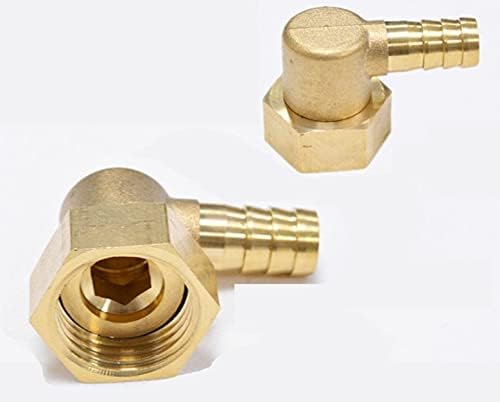- Joined
- Jan 3, 2020
- Messages
- 3,232
- Reaction score
- 3,911
Supply lines use compression (flare) threads at the valve. FIP is female iron pipe. Those 1/2" FIP connections in my experience typically come from China where they adopted the British straight threads it seems on the fixtures' connection to the supply line (think Hong Kong). The BSP connections need a gasket or a variation but don't use teflon tape or pipe dope. And in most cases BSP and NPT don't play well together because the threads are cut differently, but each does have straight and tapered variations. BSP is British Standard Pipe. By itself (BSP) it generally is straight (parallel -P) threads as that's the standard and NPT is National Pipe Threads, which by itself, is pretty much always tapered (T) as that's the standard. Straight pipe threads need a gasket usually, tapered gets the teflon or pipe dope. The supply line you have therefore is 1/2" female iron pipe (FIP) but the threads are BSP( or BSPP). Big box suppliers know that China is making a lot of fixtures so the stores have the braided supply lines acting as an adapter to make it "easier" for you. There are 1/2" BSP to 1/2" NPT adapters (possibly a coupling instead). Kind of depends on where the supply is coming from and where the waste is going to. You might want to go to garden hose threads (GHT) for instance on the supply to connect to hose/spigot. And then what type of container is the waste travelling to?It turns out that the two pipes in this thing are actually different. I can make the drain pipe work with a 1/2" FPT barb and some teflon tape, because it won't see any real pressure. But 1/2" FPT won't even start to thread on the supply pipe.
1/2" FIP at the end of a braided faucet hose fits the supply pipe. I may have to use a short one with a barb in the other end to get to the silicone hose. I'd prefer not to, because it will require a taller box to house this thing. (The braided hose is only so bendy.)
Why does the braided hose FIP connection fit the supply pipe, but a 1/2" FTP won't? Beats me. Are braided hose FIP threads not tapered?









































![Craft A Brew - Safale S-04 Dry Yeast - Fermentis - English Ale Dry Yeast - For English and American Ales and Hard Apple Ciders - Ingredients for Home Brewing - Beer Making Supplies - [1 Pack]](https://m.media-amazon.com/images/I/41fVGNh6JfL._SL500_.jpg)





